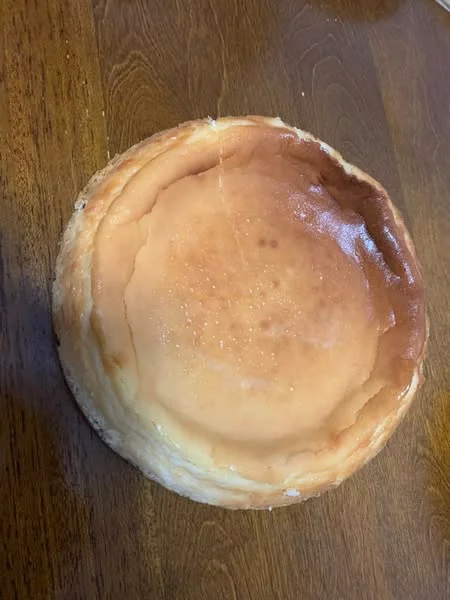Homemade Gluten-Free Cheesecake Recipe
Cheesecake is one of those timeless desserts that brings comfort, elegance, and indulgence all in one bite. For people who are sensitive to gluten or who choose to avoid it, making a homemade gluten-free cheesecake ensures that you don’t miss out on this creamy classic. With the right balance of rich cream cheese filling and a tender, flavorful crust made from gluten-free cookies, this recipe is guaranteed to please everyone at the table—whether or not they follow a gluten-free diet. In this guide, we’ll walk through the ingredients, step-by-step process, and tips for creating the perfect gluten-free cheesecake at home.
Ingredients
For the Gluten-Free Crust:
-
1 ½ cups gluten-free graham cracker crumbs (or crushed gluten-free digestive biscuits/cookies)
-
¼ cup granulated sugar
-
6 tablespoons unsalted butter, melted
For the Cheesecake Filling:
-
32 oz (4 packages) cream cheese, softened
-
1 cup granulated sugar
-
-
1 cup sour cream (room temperature)
-
1 teaspoon pure vanilla extract
-
4 large eggs (room temperature)
-
2 tablespoons gluten-free cornstarch (optional, for extra stability)
For the Topping (optional but recommended):
-
1 cup sour cream
-
3 tablespoons powdered sugar
-
½ teaspoon vanilla extract
Instructions
Step 1: Prepare the Crust
-
Preheat your oven to 325°F (163°C). Grease a 9-inch springform pan and line the bottom with parchment paper for easy removal.
-
In a medium bowl, combine the gluten-free graham cracker crumbs and sugar. Pour in the melted butter and stir until the mixture resembles wet sand.
-
Press the mixture firmly into the bottom of the prepared pan, ensuring it is evenly distributed. Use the bottom of a glass or measuring cup to pack it down tightly.
-
Bake the crust for 10 minutes, then set aside to cool while you prepare the filling.
Step 2: Make the Filling
-
In a large mixing bowl, beat the softened cream cheese with an electric mixer until smooth and creamy. This step ensures your cheesecake will have a silky texture without lumps.
-
Add the sugar gradually and continue mixing until fully incorporated.
-
Mix in the sour cream and vanilla extract. If using cornstarch for extra stability, add it at this stage.
-
Add the eggs one at a time, beating on low speed just until incorporated after each addition. Avoid overmixing, as this can introduce air and cause cracks during baking.
Step 3: Bake the Cheesecake
-
Pour the filling over the cooled crust and smooth the top with a spatula.
-
To help prevent cracking, place the springform pan inside a larger baking dish. Fill the outer dish with about an inch of hot water, creating a water bath. This helps regulate the temperature and adds moisture to the oven.
-
Bake for 55 to 65 minutes, or until the edges are set but the center still has a slight jiggle.
-
Turn off the oven, crack the door open slightly, and allow the cheesecake to cool inside for 1 hour. This slow cooling method further prevents cracks.
Step 4: Add the Topping
-
In a small bowl, mix the sour cream, powdered sugar, and vanilla extract until smooth.
-
Spread the topping evenly over the cooled cheesecake.
-
Refrigerate the cheesecake for at least 4 hours, preferably overnight, to allow it to fully set.
Tips for Success
-
Room Temperature Ingredients: Always bring your cream cheese, eggs, and sour cream to room temperature before mixing. This ensures a smooth, lump-free filling.
-
Don’t Overmix: Be gentle when incorporating eggs. Overmixing creates too much air, leading to cracks or a spongy texture.
-
Water Bath is Key: Even if you’re tempted to skip it, the water bath makes a huge difference in achieving that creamy consistency.
-
Flavor Variations: Add lemon zest for a citrus twist, swirl in gluten-free chocolate or fruit puree for variety, or top with fresh berries for a refreshing finish.
-
Storage: Cheesecake can be stored in the refrigerator for up to 5 days, tightly covered. You can also freeze individual slices for up to 2 months—perfect for when you want a quick dessert fix.
Why This Recipe Works
The beauty of this gluten-free cheesecake lies in its balance. The crust provides a buttery crunch that complements the silky-smooth filling. The filling itself is rich yet light, with the tang of sour cream and the subtle sweetness of sugar creating harmony in every bite. The addition of a water bath and careful mixing ensures that the final result is professional-quality: no cracks, no graininess—just pure cheesecake perfection.
By using gluten-free graham crackers or cookies, this recipe maintains the traditional flavor and texture of cheesecake without compromising dietary needs. The optional sour cream topping adds an elegant finish that enhances both appearance and taste.
Serving Suggestions
Serve each slice chilled with a garnish of fresh berries, a drizzle of caramel, or a spoonful of fruit compote. For a more decadent experience, pair it with chocolate ganache or a dusting of cocoa powder. This cheesecake makes the perfect centerpiece for holidays, birthdays, or even casual family dinners, as its creamy richness and gluten-free assurance appeal to all guests.
Final Thoughts
Homemade gluten-free cheesecake is more than just a dessert—it’s a celebration of flavor and texture that doesn’t compromise on indulgence. With its buttery crust, luscious filling, and endless topping options, this cheesecake is proof that gluten-free baking can be just as satisfying and delicious as traditional recipes. Once you’ve mastered this version, you’ll never need to rely on store-bought again. Instead, you’ll have a go-to recipe that wows family, friends, and even yourself every single time.
-


